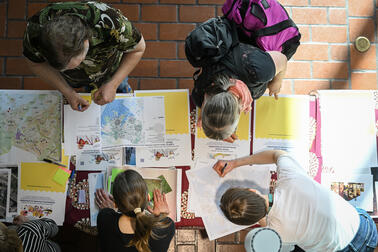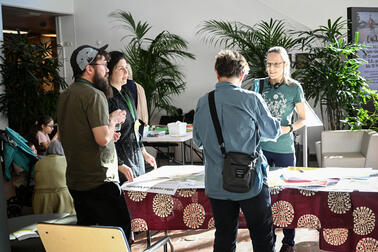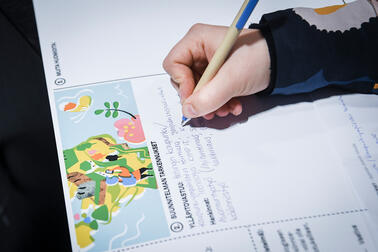
The publication examines the results of the OmaStadi vote and the voting turnout of Helsinki residents. OmaStadi is Helsinki’s way of implementing participatory budgeting.
In 2021, the City of Helsinki allocated €8.8 million to the implementation of proposals prepared jointly by residents and the city’s experts. One-fifth of the funds were allocated to projects throughout the city, and the rest were allocated to the seven major districts in proportions based on the number of residents.
The proposals to be implemented were selected by a vote in which all Helsinki residents aged 12 and over were entitled to vote. Voting took place on the OmaStadi website. Voters were asked to verify their identity with Mobile ID or bank credentials before voting. Service advisors at the city’s different service points assisted with the process. Students verified their identity with their Wilma password.
The turnout in OmaStadi was 8.1 per cent of those entitled to vote, totalling 47,064 Helsinki residents. The turnout varied from 5.9 per cent in the Eastern major district and Östersundom to 12.3 per cent in the South-Eastern major district. Women voted more actively than men in all the major districts.
Examined by postal code area, the voting turnout of Helsinki residents aged 20 and over varied clearly. However, compared to the previous vote, regional differences in the turnout evened out slightly.
Children and young people living in the Central major district voted most actively in OmaStadi
The most active age group of voters was that of comprehensive school pupils, of whom nearly one-fifth voted in OmaStadi. The next highest turnout was in the age group of 30–49-year-olds. The voting turnout was lowest among Helsinki residents aged 75 and over.
Even though children had the highest voting turnout of all the age groups, their turnout decreased significantly compared to the previous OmaStadi vote. The still-strong voting turnout of children is explained by the fact that many schools gave pupils the opportunity to vote during the school day.
A total of 396 proposals had been prepared based on the city residents’ ideas in cooperation with the city’s experts, and 75 of the proposals were selected for implementation based on the vote. The voters were able to vote on the proposals for one of the major districts according to their choice as well as on the proposals for the whole city. They could select as many proposals as allowed by the budget for the district. A total of 403,474 votes were cast for the proposals.
Examining all the votes as a whole, the proposals related to sports and outdoor recreation received the most votes. Compared to the previous round of OmaStadi in 2019, common proposals for the whole city gained more votes than before.
Equal opportunities for participation across multiple channels
Helsinki aims to provide city residents with equal opportunities to participate. From this point of view, it is important that the city and other levels of government offer various opportunities for participation across multiple channels, so that residents can find the right ways and channels for them to participate.
It would be useful to examine the factors influencing the OmaStadi voting turnout in more detail in the future, in order to reduce any obstacles to participation.
In participatory budgeting, residents decide on the use of public funds. According to the policy, residents come up with ideas and vote on how to use a certain sum of money allocated to participatory budgeting.
Participatory budgeting has been used in various parts of the world since the 1980s. Finnish cities and municipalities have applied it since the 2010s.
In Finland, participatory budgeting is based on the stipulation of the Local Government Act on the right of residents to participate in and influence the activities of municipalities (Local Government Act 410/2015, Chapter 5, Section 22). Participatory budgeting can be applied in many different ways. The name of the model used in Helsinki is OmaStadi.
Read more:
Helsinki Region Infoshare(Link leads to external service)
Link to the study (In Finnish)
Summary of the study (In Finnish)
OmaStadi(Link leads to external service)
Find out(Link leads to external service) how to participate in and influence the development of Helsinki(Link leads to external service)
Statistics and research on Helsinki
Drawing: Minna Alanko, City of Helsinki Media Bank.


